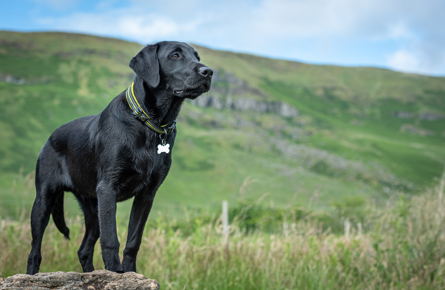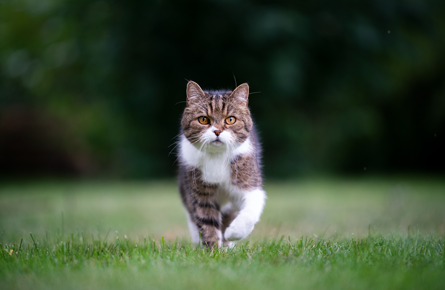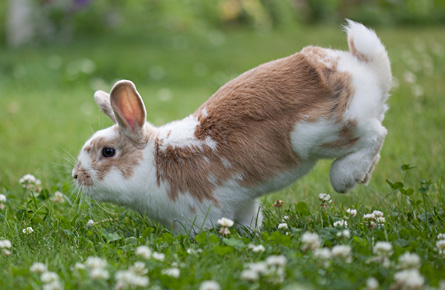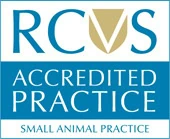Pet microchipping in Oxford is the procedure of permanently identifying your pet by implanting a chip which is the size of a grain of rice implated under their skin, just below their whiskers.
The majority of Oxford's veterinarians, including Boundary Vets, the local government, and rescue organisations, have access to a portable scanner that can read each pet microchip's unique number. This ensures that your contact details will be readily available to the central pet microchipping database. Once your pet's microchip has been read and verified, a quick phone call can assist in reuniting you together.
Book a pet microchipping in oxford appointment
Pet microchipping in Oxford is strongly recommended by the entire staff at Boundary Vets and is available for dogs, cats, ferrets, rabbits, snakes, parrots, tortoises, and horses. In addition, microchipping dogs is now mandated by law, and puppies cannot transfer ownership from the breeder until they have had their full vaccination record by the age of eight weeks. If your dog isn't microchipped, you risk a fine of up to £500. It's also important to remember that your pet needs to obtain a pet passport and be microchipped if you intend to take them overseas.
Equestrian Microchipping in Oxford
As of Monday, October 1, 2018, all horses, ponies, and donkeys must be microchipped and possess a valid UK passport in accordance with Defra's new equine identity rules. The Central Equine Database (CED) will retain the data.
Since June 30, 2009, all horses have been required to carry microchips. Horses born in Oxford before October 1, 2018, will have had two years to get their microchips before they are lost. After that, all donkey, horse, and pony owners will have to microchip their animals on October 1, 2020.
Local law enforcement agencies can locate the owners of missing or stolen horses with the help of the Central Equine Database, which facilitates the horses' quicker reunion with their owners. Additionally, it will guarantee that the owners of abandoned horses, ponies, and donkeys can be located by law enforcement or other local authorities. This provides a workable solution to animal welfare problems by enabling authorities to not only ensure that the owners receive the appropriate punishment but also that the horses, ponies, or donkeys receive the care they require.
If a horse is put down, lost, stolen, or signed out of the food chain, for example, the organisation that distributes passports must be notified of the change in the horse's ownership circumstances. The company will then have a full day to update the CED.
Before microchipping your horse, a veterinarian at Boundary Vets will make sure that it is chip-free. Before implanting the chip, the veterinarian at Boundary Veterinary Clinic and Hospital will ensure that it is operational and reads the correct microchip number. The microchip also comes with six adhesive bar codes that you may attach to papers like passport applications. For future reference, the veterinary surgeon and the horse owner should both save the bar code or microchip number.
The implantation takes place in the mid-chest, which is located on the left side of the neck. A hair patch will be removed, along with maybe administering a topical anaesthetic and cleaning the area. The pet microchip is scanned to verify correct implantation after being inserted into Oxford using a large bore needle. Oddly, edoema can develop at the insertion site, and injection site haemorrhage can occasionally occur. The usual treatment for this is to remove any formed fluid and administer antibiotics.
Pet microchipping in Oxford at Boundary Vets
Sedation is not necessary for the pet microchip insertion method because it is a minimally unpleasant procedure that can be finished during a regular session. Moreover, don't freak out if you can't recall or know if your pet has a microchip; using a scanner to look for one is a really easy procedure. At one of our Boundary Vets sites, we may arrange for a team member to scan your pet and search for a functional chip. Please make sure that we all check to make sure the animal hasn't received a microchip before implanting a new one.
You will be required to fill out a registration form at the time of your pet's microchip implantation. A member of the Boundary Vets staff will then use this information to upload your information to a nationwide database. The cost of implantation includes the expense of storing your pet's information in the database throughout their whole life.
Update your contact information as soon as possible if something changes. When used in the Pet Passport programme, all of Boundary Vets' microchips are recognised by scanners overseas since they adhere to the International Standard (ISO).
For additional details about pet microchipping in Oxford, contact the Oxford branch that is closest to your residence to talk with a member of our welcoming staff.








